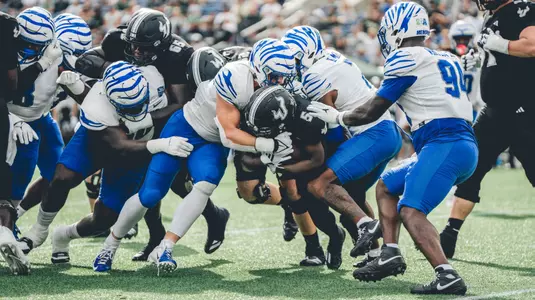
The Chicago Bears vs Minnesota Vikings match player stats reveal a thrilling battle between two strong NFL teams. Fans eagerly watched as each player gave their best performance, making the game exciting from start to finish.
In this article, we will explore the Chicago Bears vs Minnesota Vikings match player stats in detail. We’ll look at the top performers, key moments, and important numbers that shaped the outcome. Whether you are a Bears or Vikings fan, this breakdown will help you understand who made the biggest impact on the field.
Table of Contents
Key Highlights from the Game
Every match has standout moments that define its outcome. This game had several key highlights that made it unforgettable.
- Big touchdown plays changed the momentum.
- Strong defensive stops slowed down the opponents.
- Turnovers and interceptions shaped the game’s direction.
Fans saw moments of brilliance from both teams. These highlights show why this was a must-watch game.

Quarterback Showdown – Who Performed Better?
The quarterbacks played a crucial role in this game. Both tried their best to lead their teams to victory.
One quarterback showed strong passing accuracy, making big plays down the field. The other struggled under pressure but still managed to score points. Quarterback stats tell us how well they performed:
- Passing yards: Showed how far the ball traveled.
- Completion rate: Measured accuracy.
- Touchdowns vs interceptions: Showed efficiency and mistakes.
In the end, the quarterback with fewer mistakes helped his team secure the win.
Running Backs Comparison – Who Dominated the Field?
Running backs are key players in any football game. Their ability to break through defenses can change everything.
One team had a running back who rushed for over 100 yards. He showed great speed and strength, making defenders miss. The other team’s running back struggled, facing a strong defensive line. Important running back stats include:
- Total rushing yards – Shows ground game success.
- Yards per carry – Measures efficiency.
- Touchdowns scored – Shows finishing ability.
The team with better rushing stats often controls the pace of the game.
Wide Receivers and Tight Ends – Top Plays & Catches
Receivers play a big role in any game. They help quarterbacks move the ball down the field.
One team’s top receiver made multiple long catches, keeping drives alive. The opposing team’s tight end also had a great game, making key catches in the red zone. Important receiver stats include:
- Total receptions – How many catches they made.
- Receiving yards – Measures their impact.
- Touchdowns – Show their ability to score.
Strong receiving performances help teams score points and keep pressure on defenses.
Defensive Standouts – Who Made the Best Stops?
Defense wins games, and this match was no different. Both teams had players making big tackles and key stops.
One defensive player had multiple sacks, pressuring the quarterback all game. Another player made an incredible interception, stopping a scoring drive. Important defensive stats include:
- Tackles made – Shows involvement in stopping plays.
- Sacks – Measures how well they pressured the quarterback.
- Interceptions – Can change the game instantly.
A strong defense can make it hard for the opposing team to score.
Turnovers & Mistakes – How They Changed the Game
Mistakes can make or break a game. In this match, turnovers played a huge role.
One team lost the ball twice due to fumbles. The other team took advantage, scoring points off those mistakes. Important turnover stats include:
- Fumbles lost – Shows ball security issues.
- Interceptions thrown – Can shift momentum.
- Points off turnovers – Measures how well mistakes were used.
Minimizing mistakes is key to winning tough games.
Special Teams Impact – Kicks, Returns, and Field Goals
Special teams can often decide close games. This match had some key moments in this area.
One team’s kicker made a clutch field goal in the final minutes. The other team had a great punt return, setting up a touchdown. Key special teams stats include:
- Field goal percentage – Measures accuracy.
- Punt return yards – Shows special teams impact.
- Blocked kicks – Can prevent scoring chances.
A strong special teams unit can change the outcome of a game.
Final Team Stats – How Did the Numbers Compare?
At the end of the game, team stats tell the full story. Comparing both teams helps see who played better overall.
- Total yards gained – Measures offensive success.
- Time of possession – Shows who controlled the game.
- Third-down conversions – Key for keeping drives alive.
Looking at these numbers helps explain why one team won and the other lost.
What This Game Means for the Season Ahead
This game was important for both teams’ seasons. It gave fans a preview of what’s to come.
One team showed strength and potential for the playoffs. The other team needs to improve in key areas. Moving forward, they must focus on fixing mistakes and improving consistency.

Conclusion
The Chicago Bears vs Minnesota Vikings match player stats show us an exciting and competitive game. Each player contributed in different ways, making the match fun to watch. Quarterbacks, running backs, and defenders all played key roles in the final outcome.
Looking ahead, both teams will take lessons from this game. They will work on improving weaknesses and building on their strengths. Fans can look forward to more great performances in future games.
FAQs
Q: Who was the best player in the Chicago Bears vs Minnesota Vikings match?
A: The best player was the one with the most impact, usually a quarterback or top defender. Stats show who performed best.
Q: How did the quarterbacks perform in the match?
A: One quarterback had a higher completion rate, while the other made key mistakes. Passing yards and touchdowns help compare them.
Q: What were the biggest mistakes in the game?
A: Turnovers, missed tackles, and failed third-down conversions were costly for both teams.




